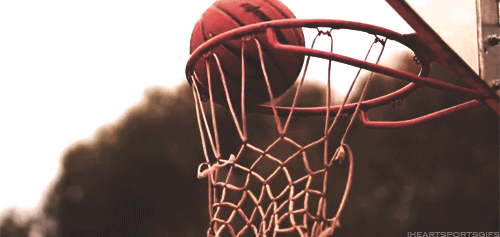Auburn University, Elementary Education
Bouncing the Basketball with B

Rationale: This lesson will help children identify /b/, the phoneme represented by B. Students will learn to recognize /b/ in spoken words by learning a meaningful representation (bouncing a basketball) and the letter symbol B, practice finding /b/ in words, and apply phoneme awareness with /b/ in phonetic cue reading by distinguishing rhyming words from beginning letters.
Materials:
1. primary paper and pencil;
2. chart with “Bill baked banana bread for Betty”
3. drawing paper and colored pencils or crayons
4. Dr. Seuss's ABC (Random House, 1963)
5. word cards with BET, BAD, LAND, BOOK, GLOW, BALL
6. assessment worksheet identifying pictures with /b/ (URL below)
Procedures:
1. Say: Our language is very special because it is made up of many letters and sounds that we use to create words. Our mouth moves in a lot of different ways to make all of those letters and sounds. Today we’re going to work on /b/ and the way our mouths move when we make that sound.
2. When we say /b/ to make the letter B, let’s pretend that we are bouncing a basketball. When the ball hits the ground, it makes the /b/ sound. Let’s practice pretending to bounce the ball: /b/, /b/, /b/ [move hand like you are bouncing a ball]. Watch and feel how our mouths sound when we make the /b/ sound. Our lips press together, and then we force out air and the sound when we open our mouths.
3. Let me show you how to find /b/ in the word “crab”. I’m going to listen for the sound of our basketball hitting the ground and I’m going to look for when my lips press together before I say our key sound. Slowly say: Ccc-rrr-ab. Slower: Ccc-rrr-a-a-a-bbb. There it was! Did you hear the basketball bouncing?
4. Now let’s try a tongue twister to hear our /b/ sound in some other words. (On chart): “Bill baked banana bread for Betty”. Let’s say it three times together. Now let’s say it again, but this time, stretch the /b/ and bounce your basketball at the beginning of the words if you hear the /b/. “Bbbill bbbaked bbbanana bbbread for Bbbetty.” Great! Now try it again, but this time let’s break off the /b/ from the rest of the word: “/B/ill /b/aked /b/read for /B/etty.”
5. [Have the students take out primary paper and a pencil]. We use the letter B to represent /b/. The uppercase B has two loops; think of them as basketball hoops! When we write an uppercase B, we start at the roof on our paper and draw a line straight down to the sidewalk. Then we come back up to the roof and make a loop from the roof to the fence, then from the fence to the sidewalk. Writing a lowercase b is similar, but it only has one loop or one ‘basketball hoop’. Start at the roof and draw a straight line down to the sidewalk. Then put your pencil on the fence and draw a hump down to the sidewalk. After I check your work, I want you to make five more capital B’s and five more lowercase b’s.
6. Call on students to answer the following and ask them to explain how they knew: Do you hear /b/ in bird or dog? End or begin? Grab or give? Trouble or happy? Soccer or football? Say: Let’s see if you can feel your lips pressing together to make /b/ in this sentence. Bounce you basketballs if you hear /b/: The, busy, yellow, bee, flew, by, the, bear, near, the, barn.
7. Say: “Let’s look at an alphabet book. Dr. Seuss tells us about what a baby and a barber do and what they see one afternoon.” Read pages 6-8, drawing out the /b/. “Can you think of any other words with /b/?” Ask the students to make up a silly Dr. Seuss phrase with words that have /b/ in them. Allow them to illustrate a picture that goes with their sentence.
8. Show students the word BET and model how to decide if it’s bet or let: The B tells me to bounce the basketball, /b/, so this word is bbb-et, bet. Now you can try some! BAD: mad or bad? LAND: band or land? BOOK: book or cook? GLOW: glow or blow? BALL: tall or ball?
9. For assessment, give the students a worksheet. The worksheet contains pictures; some have the /b/ sound (either in the beginning, middle, or end) and some do not. The students need to color only the pictures that contain the /b/ sound. Call students up individually to read the phonetic cue words from step #8.
References:
Joanna Holcomb, Bouncing the Ball With B http://www.auburn.edu/academic/education/reading_genie/doorways/holcombel.htm
Assessment Worksheet: https://www.superteacherworksheets.com/phonics-wordswith/letter-b.pdf?up=1466611200